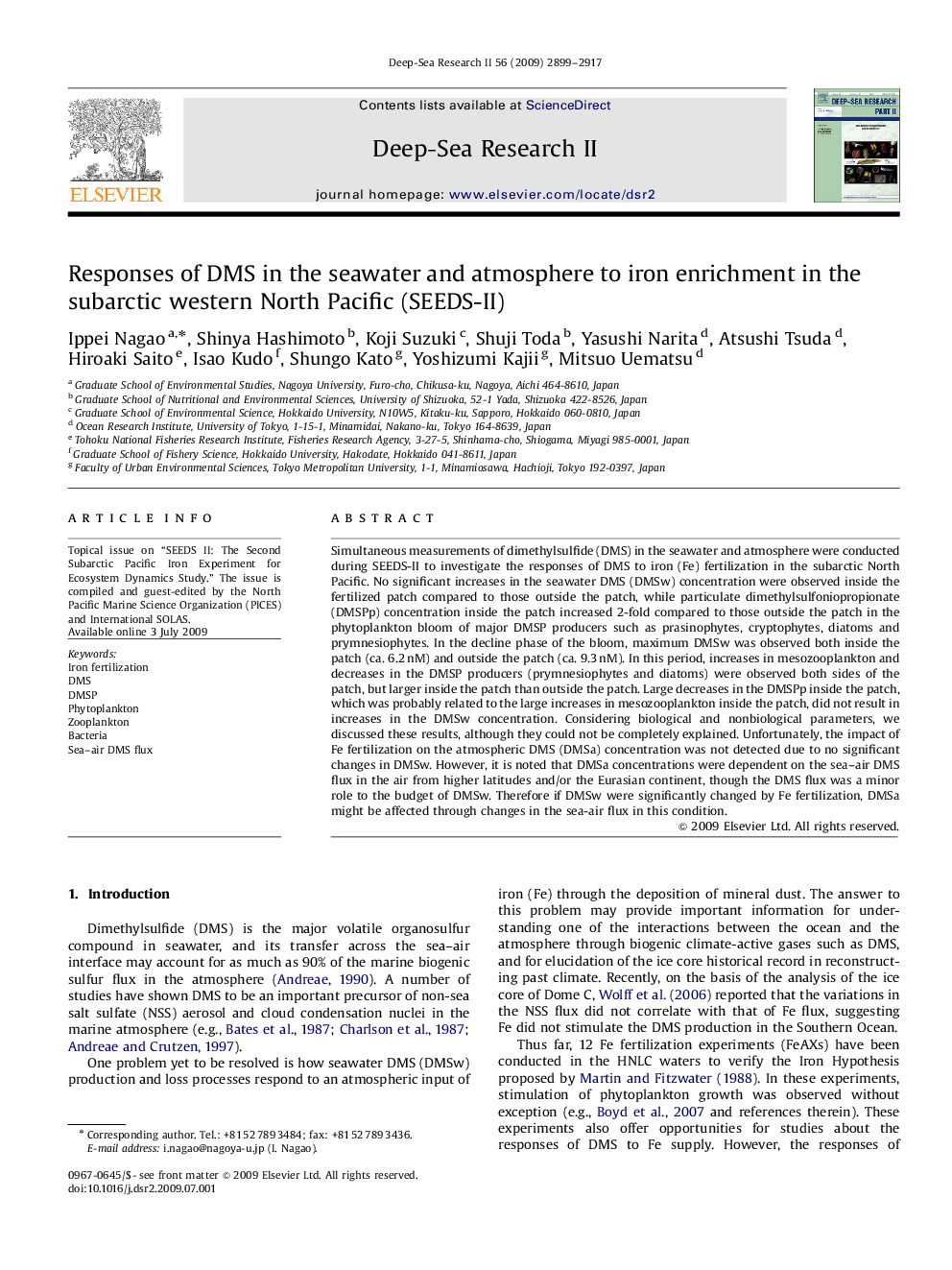| Article ID | Journal | Published Year | Pages | File Type |
|---|---|---|---|---|
| 4537708 | Deep Sea Research Part II: Topical Studies in Oceanography | 2009 | 19 Pages |
Abstract
Simultaneous measurements of dimethylsulfide (DMS) in the seawater and atmosphere were conducted during SEEDS-II to investigate the responses of DMS to iron (Fe) fertilization in the subarctic North Pacific. No significant increases in the seawater DMS (DMSw) concentration were observed inside the fertilized patch compared to those outside the patch, while particulate dimethylsulfoniopropionate (DMSPp) concentration inside the patch increased 2-fold compared to those outside the patch in the phytoplankton bloom of major DMSP producers such as prasinophytes, cryptophytes, diatoms and prymnesiophytes. In the decline phase of the bloom, maximum DMSw was observed both inside the patch (ca. 6.2Â nM) and outside the patch (ca. 9.3Â nM). In this period, increases in mesozooplankton and decreases in the DMSP producers (prymnesiophytes and diatoms) were observed both sides of the patch, but larger inside the patch than outside the patch. Large decreases in the DMSPp inside the patch, which was probably related to the large increases in mesozooplankton inside the patch, did not result in increases in the DMSw concentration. Considering biological and nonbiological parameters, we discussed these results, although they could not be completely explained. Unfortunately, the impact of Fe fertilization on the atmospheric DMS (DMSa) concentration was not detected due to no significant changes in DMSw. However, it is noted that DMSa concentrations were dependent on the sea-air DMS flux in the air from higher latitudes and/or the Eurasian continent, though the DMS flux was a minor role to the budget of DMSw. Therefore if DMSw were significantly changed by Fe fertilization, DMSa might be affected through changes in the sea-air flux in this condition.
Related Topics
Physical Sciences and Engineering
Earth and Planetary Sciences
Geology
Authors
Ippei Nagao, Shinya Hashimoto, Koji Suzuki, Shuji Toda, Yasushi Narita, Atsushi Tsuda, Hiroaki Saito, Isao Kudo, Shungo Kato, Yoshizumi Kajii, Mitsuo Uematsu,
